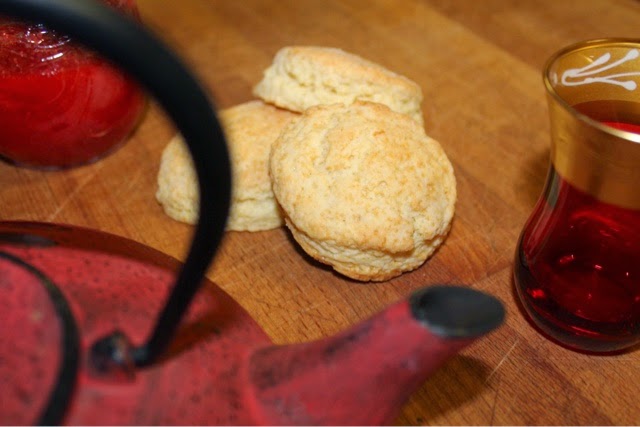We used to love those things—that is, until we made Alton Brown's curry chicken pot pie. Then, after several years of only eating this homemade pot pie with not one frozen pie in sight, my sister and I tried the frozen pot pies again.
And I must say, bleh—as a result of those little frozen pies shining so bright in our memories, we expected too much out of them; they tasted pretty flavorless to our now-enlightened palates.
Curry chicken pot pie has been one of our go-to favorites ever since we discovered it, and there is enough for the whole family. However, this chicken pot pie is different from others in a few ways: 1. It is crustless except for the puff pastry that is laid on top of the vegetables and chicken—which makes it easier to make, and 2. It contains curry for a nice, different flavor.
Like I said, this pot pie is pretty easy to make.
Just cook some vegetables until they're nice and golden brown.
Make your curry sauce by sweating your onions and celery in butter and cooking out the water, adding flour and curry, whisking in milk and chicken broth, and adding some salt, pepper, and parsley for flavor.
Combine the sauce and vegetables in a casserole dish.
Spread on the puff pastry.
Cut a whale, a cupcake, and two cats out of the extra puff pastry.
Just kidding—only if you feel like it.
Just kidding—only if you feel like it.
Alton Brown's Curry Chicken Pot Pie
Ingredients:
4 cups frozen vegetable mix (peas, carrots, corn)*
1 to 2 Tbs. canola oil
1 to 2 Tbs. canola oil
3 Tbs. butter
1 cup chopped onion
1 cup chopped celery
1 cup chopped onion
1 cup chopped celery
1 1/2 cups low sodium chicken broth
1/2 cup milk
3 Tbs. flour
1 tsp. curry powder
1/2 cup milk
3 Tbs. flour
1 tsp. curry powder
2 Tbs. dried parsley
1 tsp. salt
1/2 tsp. fresh ground pepper
1 tsp. salt
1/2 tsp. fresh ground pepper
2 cups cubed cooked chicken
1 package puff pastry
1 package puff pastry
1. Preheat oven to 400ºF.
2. Toss the frozen vegetables with canola oil to evenly coat; spread onto a jelly roll pan. Place under broiler on high until golden, about 3 minutes.
2. Toss the frozen vegetables with canola oil to evenly coat; spread onto a jelly roll pan. Place under broiler on high until golden, about 3 minutes.
3. In a sauté pan, heat 1 tablespoon of butter, then add the onion and celery to sweat them.
4. In a small pot on medium heat, warm the chicken broth and milk.
5. To the celery mix, add 2 more tablespoons of butter; cook out the water. Add the flour and curry, cooking for 1 to 2 minutes.
6. Whisk the milk mixture into the celery mixture and cook until thickened.
7. Add parsley, salt, and pepper. Mix in the browned vegetables and the chicken.
8. Pour sauce mixture into a large casserole dish. Lay a sheet of puff pastry over top as a crust.
9. Cook in the oven for 25 minutes, until the puff pastry is golden brown and the sauce is hot and bubbly.
*Various other types of vegetables may also be used. If using fresh rather than frozen carrots, they will need to be chopped into small pieces about the same size as the other vegetables being used, and will need to be baked for about 10 minutes at 350ºF before being broiled with the other vegetables to avoid crunchiness.
Recipe from: Alton Brown, http://www.foodnetwork.com/recipes/alton-brown/curry-chicken-pot-pie-recipe.html




















